In our project, we identify, analyse and develop Use Cases of ODPs in the energy and transport sector. This is an evolutionary process following the timeline below.

Use Cases
The most promising

6 Use Cases
In detail

The 3 best ones
20|40 M€

Monitoring, operation, and planning tool for DSOs facilitating flexibility procurement.
The use case proposes a digital platform for DSOs that creates a digital twin of the grid while offering essential services like grid planning, predictive maintenance, forecasting, phase shifting, and flexibility procurement, also allowing DSOs to test solutions virtually before real-world implementation. As DSOs face challenges from increased electrification and renewable energy sources connected to their network, the platform helps mitigate these issues. It connects DSOs and stakeholders automatically via geographical data, providing both grid and flexibility services to improve grid management and resilience.
Creating a tool to generate digital twins of distribution grids.
Streamlining the process for procuring grid services.
Raising end-user awareness and involvement in grid services.

Digital platform for data centers to optimize processes, recover heat and provide flexibility services.
At the core of this UC, in order to ensure reliable control of data centers(DCs),- there is the creation of a digital twin, generated using hardware in the loop and data-driven approaches to test solutions before real-world application. The UC foresees microservices, developed in-house or by external providers, integrating real-time energy and market data to optimize DC operations, reduce carbon footprint, and manage server room temperature. Additionally, control algorithms and planning microservices focus on waste heat reuse for district heating, enhancing energy efficiency and flexibility while utilizing renewable energy sources.
Ensure coordination between heating, cooling, energy storage technologies, and RESs.
Have a decision-making on operation design for higher system and costs efficiencies.
Provide ancillary services to the power system.
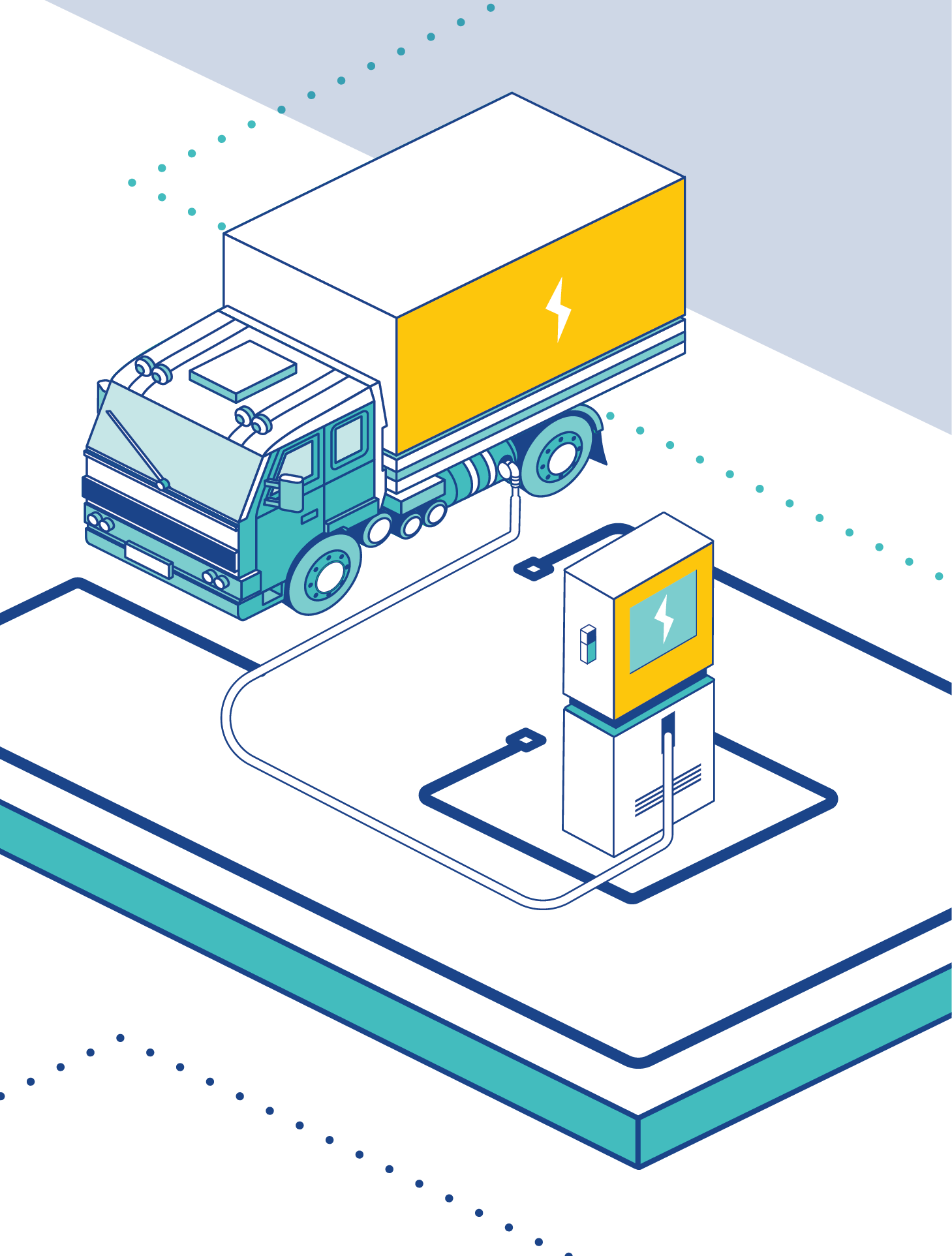
ODP for coordinating electric trucks charging to address issues related to locating charging points, traffic congestion, and grid stability.
The transition to electric trucks (ETs) is underway. This shift, while environmentally beneficial, presents challenges such as concentrated ETs in industrial parks, numerous fast-charging stations, and limited grid capacity. To address these issues, a digital platform is being developed to provide short-term charging coordination and long-term infrastructure planning. By accessing data on truck routes and charging station statuses, the platform optimizes decisions regarding charging points, traffic congestion, and grid reliability. It also takes into account ET preferences and availability, ensuring efficient and sustainable operations.
Facilitating the charging coordination of ETs and providing adaptive charging strategies.
Managing traffic and limiting congestion.
Developing tools for evaluating grid impact of ETs charging and utilizing their flexibility.

Machine learning system for cross-border EV charging that integrates renewable energy and dynamic pricing to enhance grid stability and promote sustainable commuting.
The rapid increase in cross-border commuting and electric vehicle (EV) adoption challenges the electrical grid, necessitating efficient cross-region EV charging solutions integrated with renewable energy. A proposed system leverages machine learning to predict energy demand and production, enabling dynamic pricing to optimize consumption and reduce waste. This smart, sustainable, and scalable EV charging solution incorporates smart charging technology and AI to enhance the user experience, promote sustainability, ensure grid stability, and facilitate seamless, economical cross-border mobility for EV users.
Develop AI methods to predict RES generation and commuter patterns.
Implement dynamic pricing models based on renewable energy availability.
Create adaptive charging frameworks that optimize schedules.
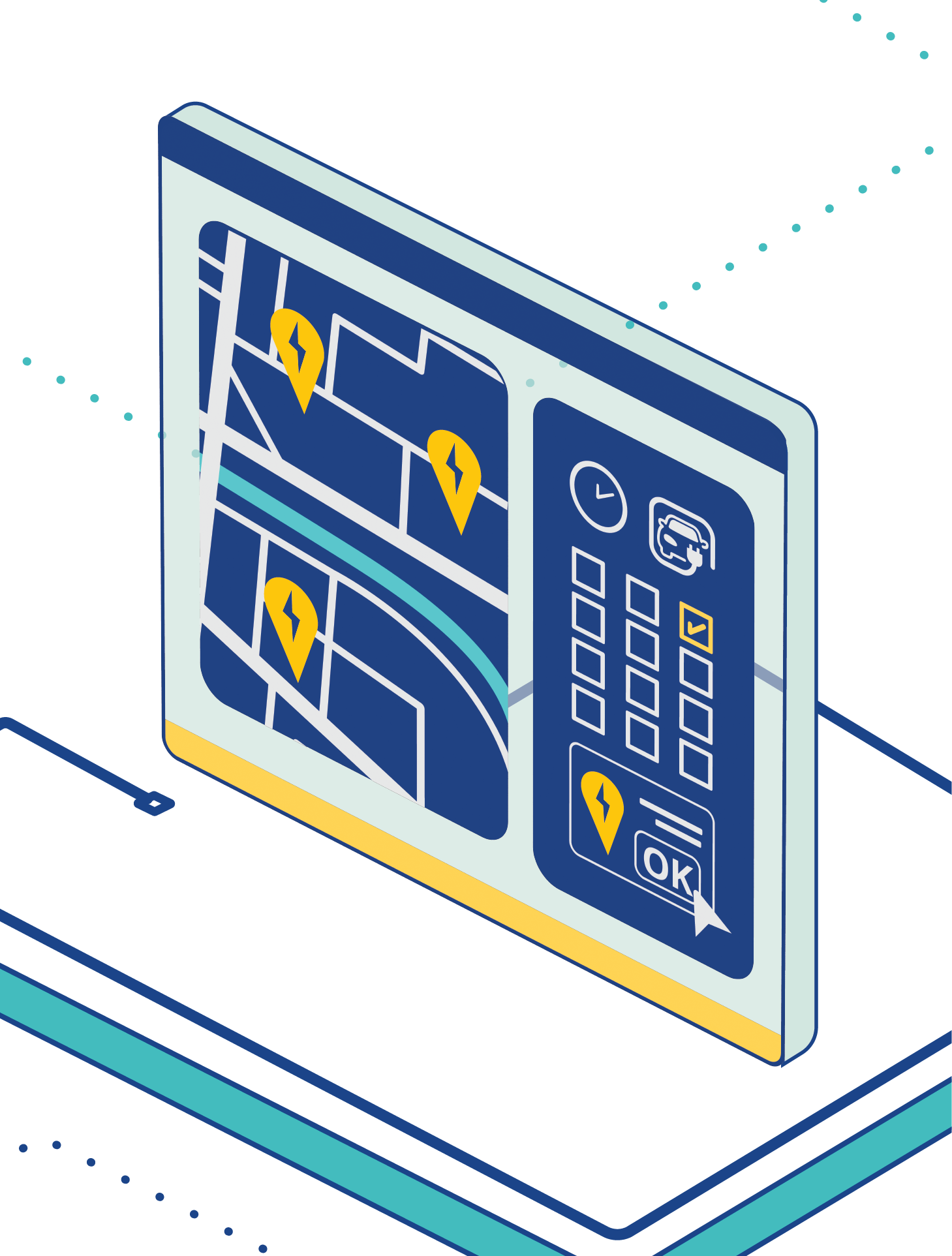
Booking platform for EV owners to secure charging across EU borders, allowing fixed-price subscriptions and enabling better interaction with the grid.
The use case involves developing a booking platform for EV owners to secure charging across EU borders, offering fixed-price subscriptions and enabling E-Mobility Service Providers (EMSPs) to forecast and profit from higher charger utilization and the provision of grid services. This also allows Charging Point Providers to increase their visibility by being integrated into route planning and roaming and EV owners can benefit from high-quality, cross-state booking, on-demand charging, and reduced waiting times. Finally, TSOs/DSOs can leverage charging flexibility to address grid challenges, enhancing overall grid stability.
Provide optimal charging point booking,
Develop an EV roaming service and facilitate cross-border payments.
Use EVs flexibility to solve grid challenges at distribution and transmission levels.

Platform allowing to enhance grid stability by utilizing Demand Side Flexibility (DSF), providing recommending actions to reduce vulnerability while aggregating and classifying flexibility capacity across member states.
Europe is moving toward central power balancing services but Demand Side Flexibility (DSF) procurement requires TSOs and DSOs coordination considering grids and power exchange limitations. This Operational Digital Platform facilitates this DSO-TSO ad TSO-TSO coordination in procuring DSF at EU level, aggregating DSF offered by aggregators or controllable loads as an input to the central balancing platforms, and classifying and categorizing different flexibility resources based on reaction type to be used for different services. Additionally, a recommender tool is integrated to allow identifying grids vulnerability in each member state (before an imbalance happens) and to send recommendations to end-users and controllable loads to prevent stability issues.
Ensure coordination and service provision to EU TSOs and DSOs.
Identify grids vulnerability.

ODP enabling an automated, secure, and regulation-compliant processes for changing the energy service provider within 24 hours in different EU countries.
Use case aimed at developing a cross-border Operational Digital Platform for automating the switching of energy providers within 24 hours across the EU. The platform ensures secure data exchange, requiring minimal sensitive information and limiting human involvement in the customer’s selection of a new supplier. Key challenges addressed include compliance with communication standards and reconciling differences in national energy markets, such as those in Denmark and Germany. The ODP’s microservices approach enhances data accuracy and safety, with potential benefits for energy suppliers and data managers handling customer information.
Facilitate energy service provider change across the EU through fast and safe application interfaces for all responsible parties.
Ensure role-based decentralized communication and verification between cross-border parties.
Ensure alignment with national regulations.

ODP for aggregating Renewables and controllable loads and involving them in power trading mechanisms, while providing information and green solutions for EV charging.
This use case proposes a cross-border platform to create a virtual community of renewable energy sources (RESs) and controllable loads (among which EV charging stations, batteries, and HVAC systems) facilitating automated power trading between consumers and RESs at agreed prices. Any excess energy from RESs or unmet demand from consumers can be traded in the day-ahead or intraday markets. The platform can function as a single market player in the electricity market, while allowing EV owners to locate participating charging stations and charge with green energy.
Facilitate end-user engagement and increase the share of RESs.
Reduce the non-predictability of RESs by aggregating them and utilizing loads flexibility.
Create a market environment for trading RES generation.
Allow to charge EVs with RES and at competitive prices.
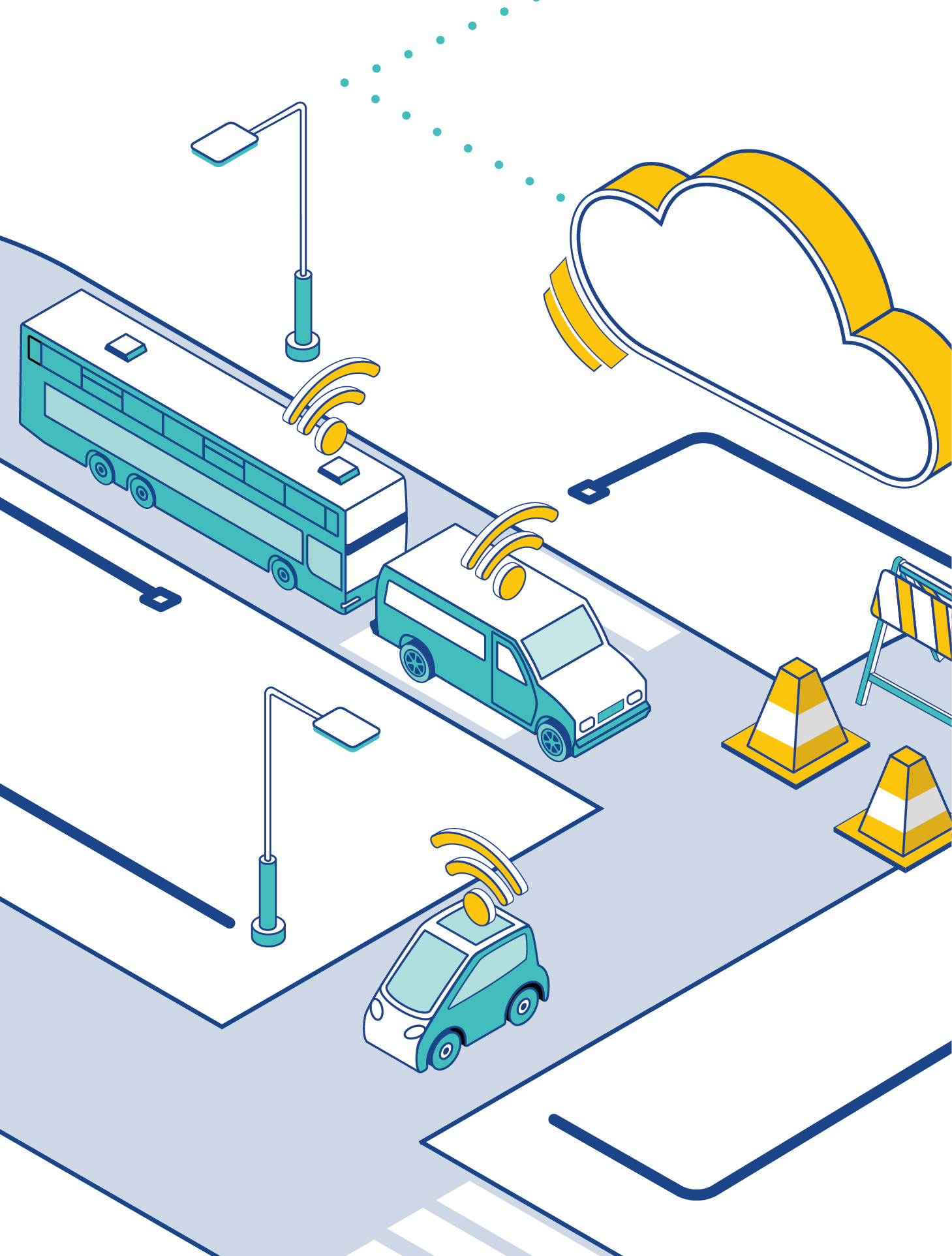
Solution connecting mobility stakeholders providing real-time traffic updates to enhance road safety and efficiency through seamless integration with vehicles and road infrastructure.
Use Case aiming to transform traffic management by utilizing Spain’s DGT 3.0 platform as a central hub for real-time traffic data. Mobility 3.0 integrates information from vehicle sensors, roadworks, and special transport vehicles, providing detailed insights into road conditions and hazards. Through collaboration among manufacturers, service providers, and government agencies, the initiative seeks to enhance road safety, optimize traffic flow, and improve mobility. Emphasizing standardization and privacy protection, Mobility 3.0 aims to create a solid framework for sharing and using mobility data, driving innovation and efficiency in transportation.
Improve travel efficiency.
Enhance road safety.
Improve maintenance services and traffic flow management.

Insurance platform gathering real time data from EVs and allowing companies to offer personalized and fair policies across Europe.
Use Case aiming to develop a platform that enables vehicles to transmit real-time data on driver behaviour and environmental conditions, creating detailed driver profiles. Insurance companies can leverage these profiles to offer personalized policies and dynamic tariffs based on driving patterns and risk factors. Vehicle manufacturers will embed V2X technology to ensure seamless data transmission across Europe. The platform will monitor driving habits, allowing continuous adjustment of insurance tariffs, enhancing road safety, promoting fair pricing, and encouraging responsible driving behaviour.
Offer new insurance services/products based on dynamic prices and driving behaviours.
Ensure data exchange to adapt insurance policies in different EU countries.
Facilitate cloud tools for insurance companies to track customers.
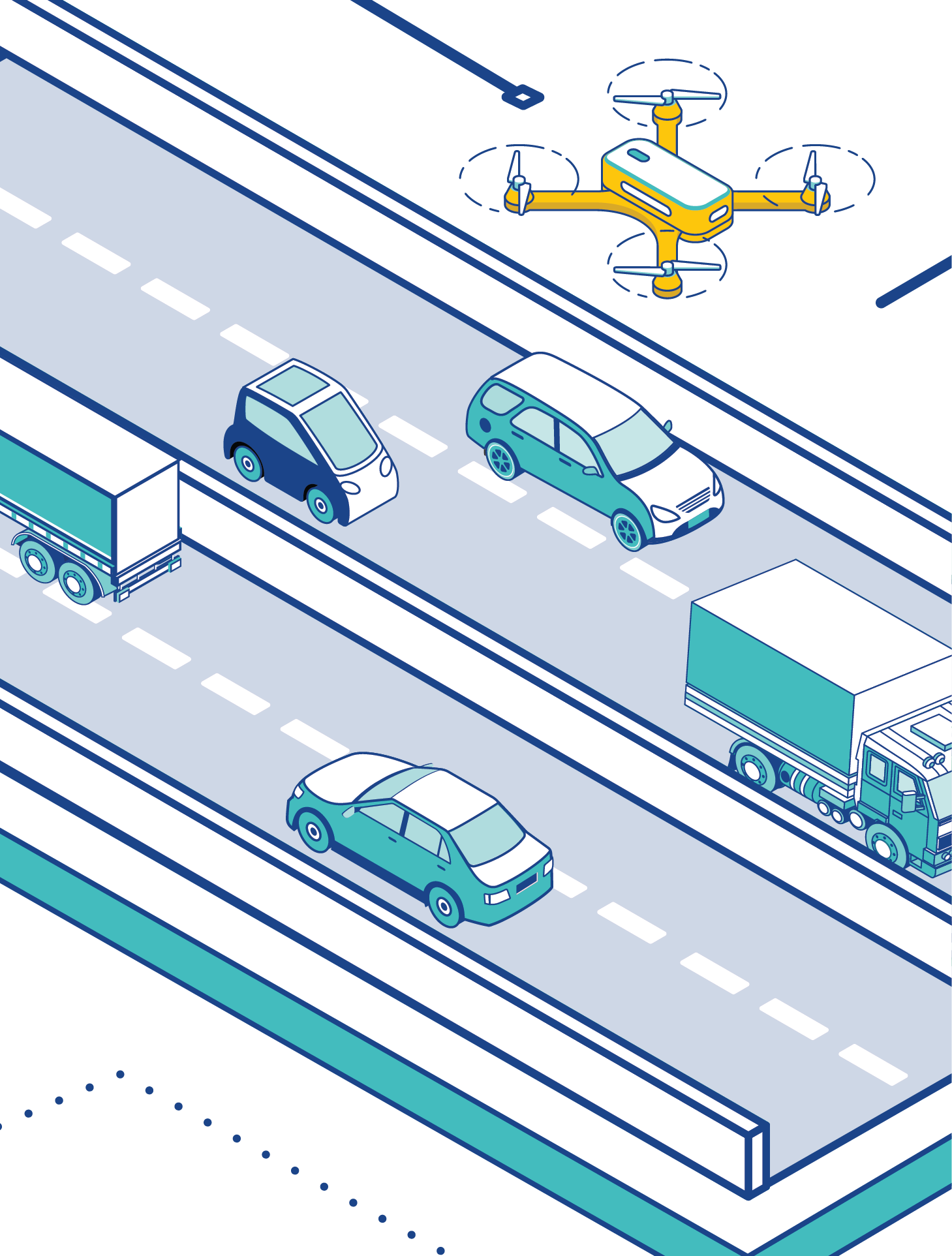
ODP to accelerate and guarantee the applications of drone-based inspections of linear infrastructures, especially in cross-border conditions.
This use case focuses on the optimization of drone inspections for maintenance operations, which allow quick and safe data acquisition that traditional methods cannot achieve but are hindered by heavy regulations and approvals from various authorities. To streamline processes, a blockchain-based digital platform is proposed to manage the permits required. This platform aims to reduce bureaucracy, speed up approval times, and make drone inspections more accessible and safer by consolidating all legal and regulatory requirements, especially in cross-border contexts.
Reduction of the time needed to obtain permits.
Reduction of human error risks in the drone flight validation process.
Improved maintenance of linear infrastructure under cross-border conditions.
Reduction of traffic disruptions or undesired effects during infrastructure inspections.

ODP leveraging AI cameras and drones providing real-time data to facilitate and improve ports operations.
The Smart Port Operations Use Case aims to provide tools to transform port management by integrating advanced monitoring technologies and digital platforms. Using AI cameras and drones, the use case enables real-time monitoring of docks, cranes, ships, and volumetric stockpile measurements. The data collected will be integrated into the Port’s FIWARE digital platform, aligned with the CEF standards. This integration focuses on enhancing operational efficiency, safety, and sustainability in port activities, setting a new standard for modern port management.
Real-time monitoring of port operations, enhancing overall efficiency.
Optimization of resource allocation, scheduling, and inventory management.
Ensure seamless integration of data on the port’s FIWARE.
Establish a scalable and replicable model for digital transformation in ports.

Blockchain-based platform to track and update the carbon footprint for the transport of maritime goods in transit through ports, from manufacturer to customer.
Logistics operators need a solution to minimize the environmental impact of maritime goods transport and provide consumers with accurate carbon footprint data for their purchases. This use case involves a blockchain-based platform that tracks and updates the carbon footprint of goods as they move from the manufacturer to the customer through various ports. The platform aims to offer society reliable, standardized, and verifiable data on the carbon footprint of goods transport, particularly during port operations.
Provide reliable and standardized data on transported goods’ carbon footprint, mainly in port operations.
Combine information from all stakeholders.
Promote the use of environmental data in the citizens’ decision-making.

Platform connecting inland waterway mobility stakeholders with other transport modes providing real-time logistics and goods traffic updates.
The Use Case proposes an Operational Digital Platform that connects inland waterway mobility stakeholders with other transport modes. This platform, originally thought for applications in the Rhine-Danube CEF inland waterway corridor, integrates transport operators, infrastructure managers, port authorities, and logistics hubs, providing real-time logistics and goods traffic updates. The goal is to enhance transport efficiency and promote a shift toward greener transport modes, such as railways and inland waterways.
Provide real-time updates to inland waterways and port operators.
Support transport operators in selecting transport modes.
Improve goods and passenger transport efficiency.
Provide alerts to ensure safety and prevent bottlenecks.
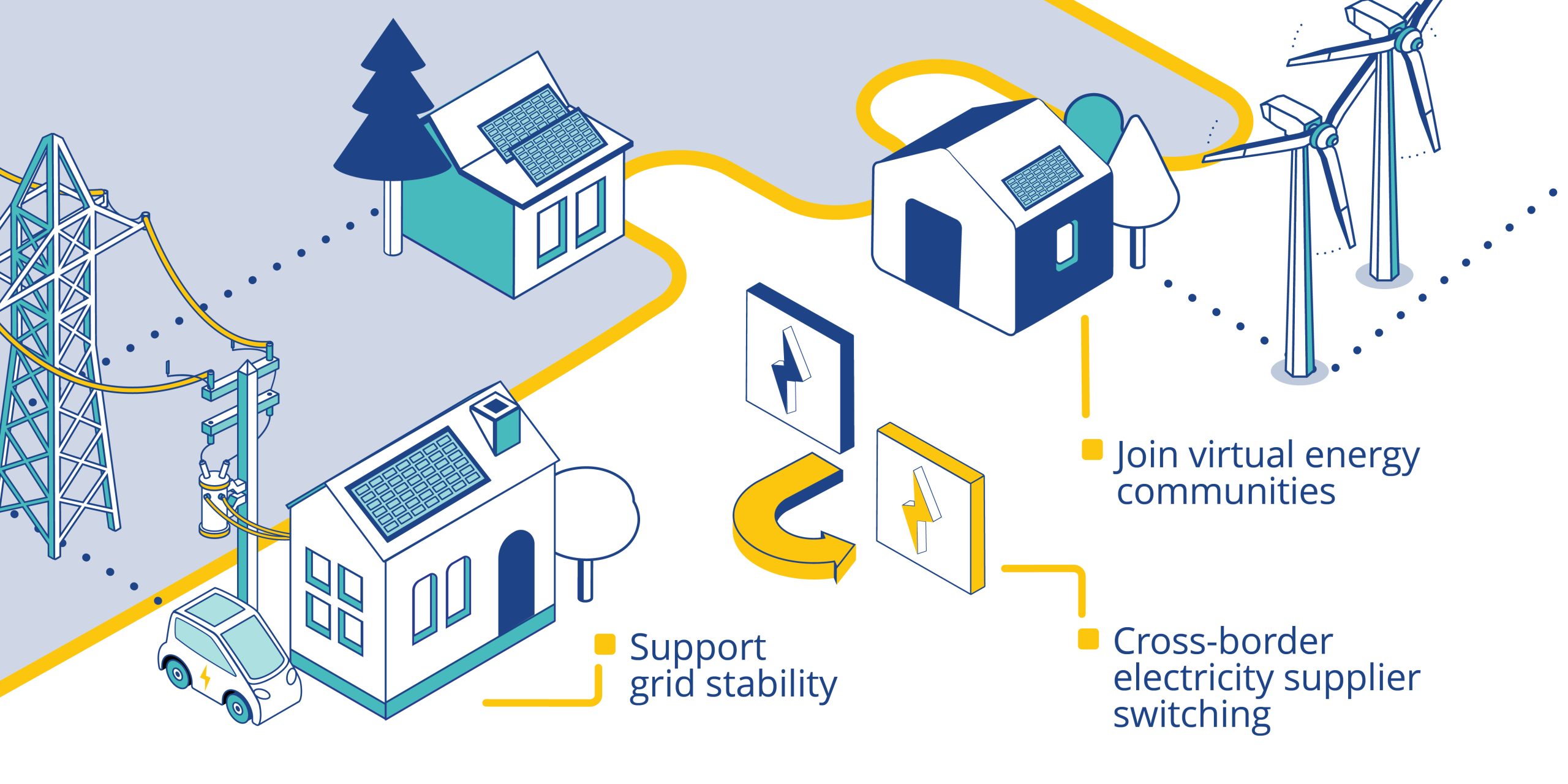
CROSS-BORDER | POWER TRANSMISSION AND DISTRIBUTION | RENEWABLE ENERGY | EDGE | CLOUD | ENERGY EFFICIENCY
This use case introduces a platform for facilitating the cross-border services for and from electricity consumers. Consumers can receive services such as automated switching of energy supplier, joining virtual energy communities, play a role in green transition, provide grid services, earn money through grid service provision, and receive recommendations for reducing the risk of power cuts. On the other hand, they will support the distribution and transmission grids balance and RESs integration. The customers will be allowed to interact with platform both automatically and manually. AI-approaches will play a key role in different services for forecasting and decision-making under uncertainty. The platform will also allow EV owners to identify charging points supplied by RESs and charge EVs with clean energy.

AUSTRIA | HUNGARY | SLOVENIA
EV CHARGING | RENEWABLE ENERGY TRADING | GRID SERVICES
This use case is designed to address the complexities of scaling up EV charging infrastructure across national borders, with a focus on infrastructure scalability, This use case is designed to address the complexities of scaling up EV charging infrastructure across national borders, with a focus on infrastructure scalability, mitigating the grid impact, managing traffic, and leveraging RESs. The platform aims to provide various services to different types of EVs including private EVs or electric trucks in a cross-border manner.
Federated model update.
Regulatory, security, sovereignty and compliance at the EU and national levels.
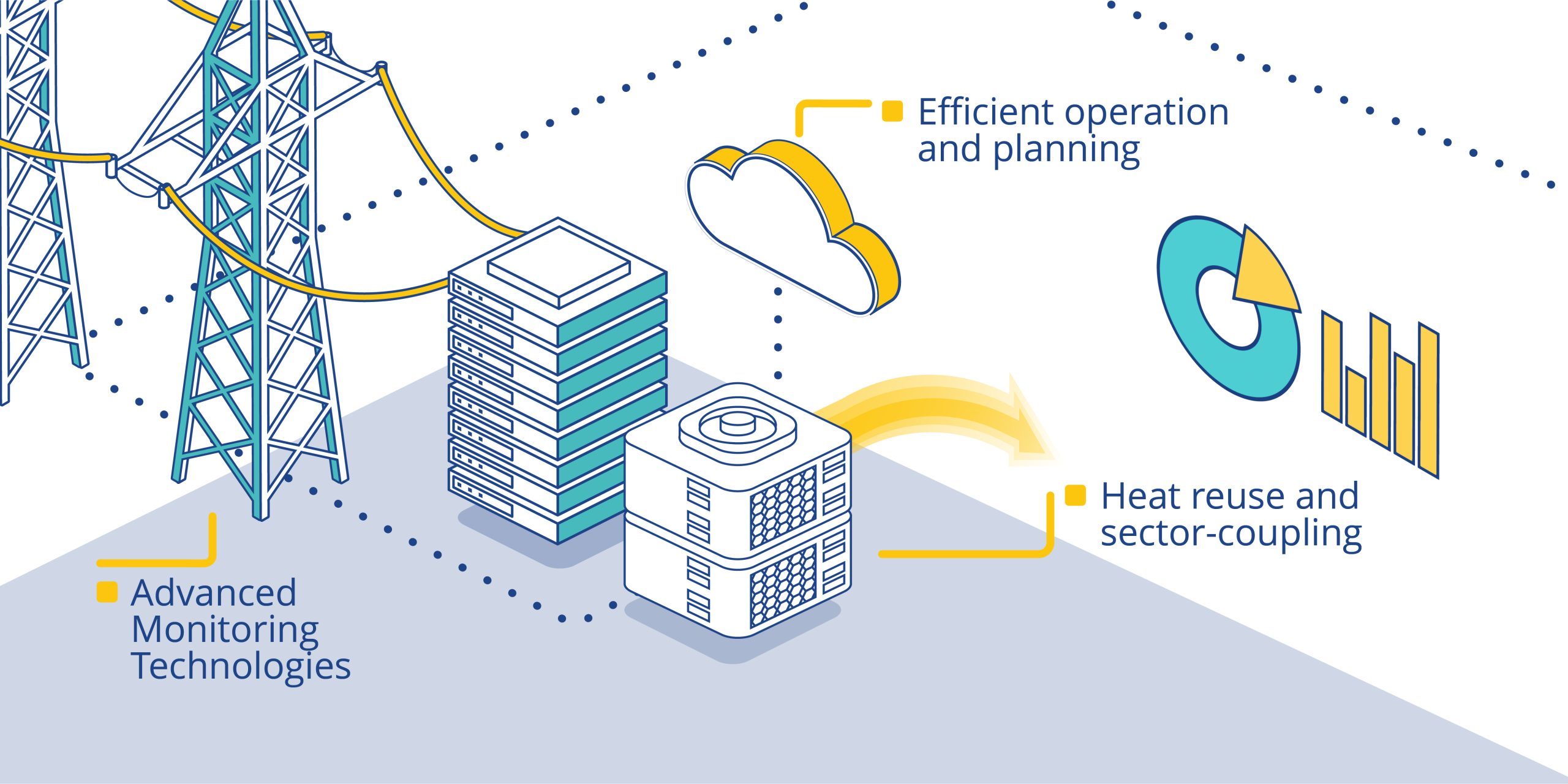
SWEDEN | DENMARK | GERMANY | EASTERN EUROPE
CROSS BORDER | EDGE | SECTOR COUPLING | ENERGY | GENERATIVE AI
This use case proposes an Operational Digital Platform that enables Data Centers to operate as cross-sector prosumers in the EU-scale energy and fuel transport networks by providing ancillary or grid services, moving their compute loads across the border and plan for innovative equipment integration based on real-time energy analytics.The business case proposed for Data Center industry is to cope with snowballing of AI demand [7] and curbing of Moore’s law while keeping their KPIs at their superior level by utilizing sustainability enablers, e. g. renewable energy resources (RES), controllable loads (CL), emerging energy reuse/conversion technologies, digital interfaces and IoT.
Planning: Parameters of the heat pump, water tank and battery storage are chosen from several options based on technoeconomic analysis of demand response scenarios inside the target DC.
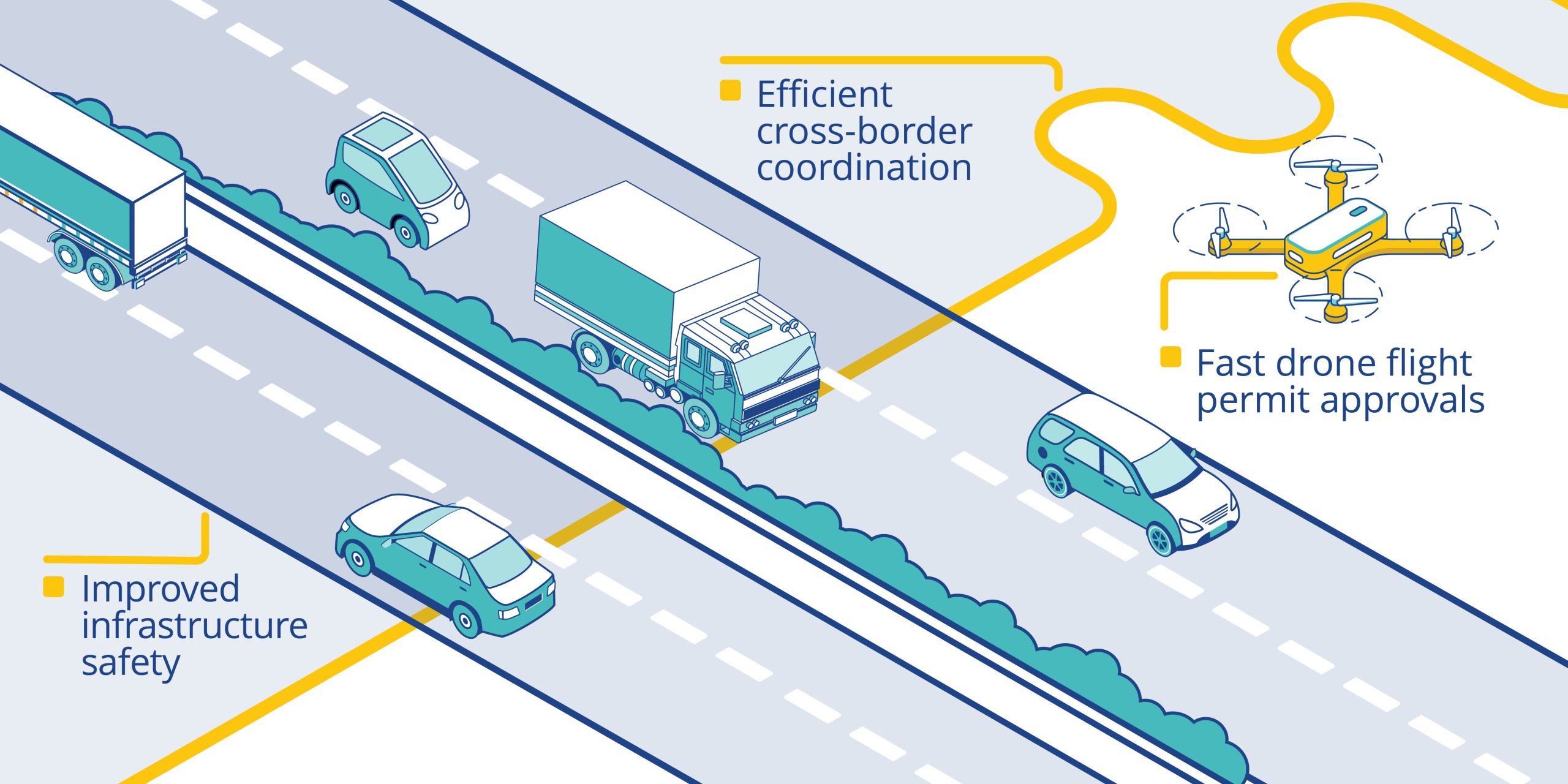
SPAIN | PORTUGAL
CROSS BORDER | INFRASTRUCTURE | EDGE | CLOUD | TRAFFIC AND LOGISTIC
This UC aims to streamline the bureaucratic process of securing flight permits for drone inspections of linear infrastructure, such as roads, railways, and pipelines. Currently, obtaining these permits is time-consuming, involving multiple authorities across local, national, and cross-border levels. This use case proposes a green blockchain-powered platform to connect air traffic controllers, regulatory bodies, and infrastructure managers, allowing them to coordinate permit issuance efficiently. By automating validation steps and consolidating approvals on a single platform, the ODP (Operational Digital Platform) would reduce waiting times, enhance safety, and enable more frequent, accurate inspections.
Routine Maintenance Inspections: Infrastructure managers initiate standard inspections using drones, with the ODP rapidly handling permit validations across multiple regulatory bodies.
Cross-Border Operations: For cross-national infrastructures, the ODP coordinates authorizations between national authorities, streamlining compliance for seamless, cross-border drone inspections.
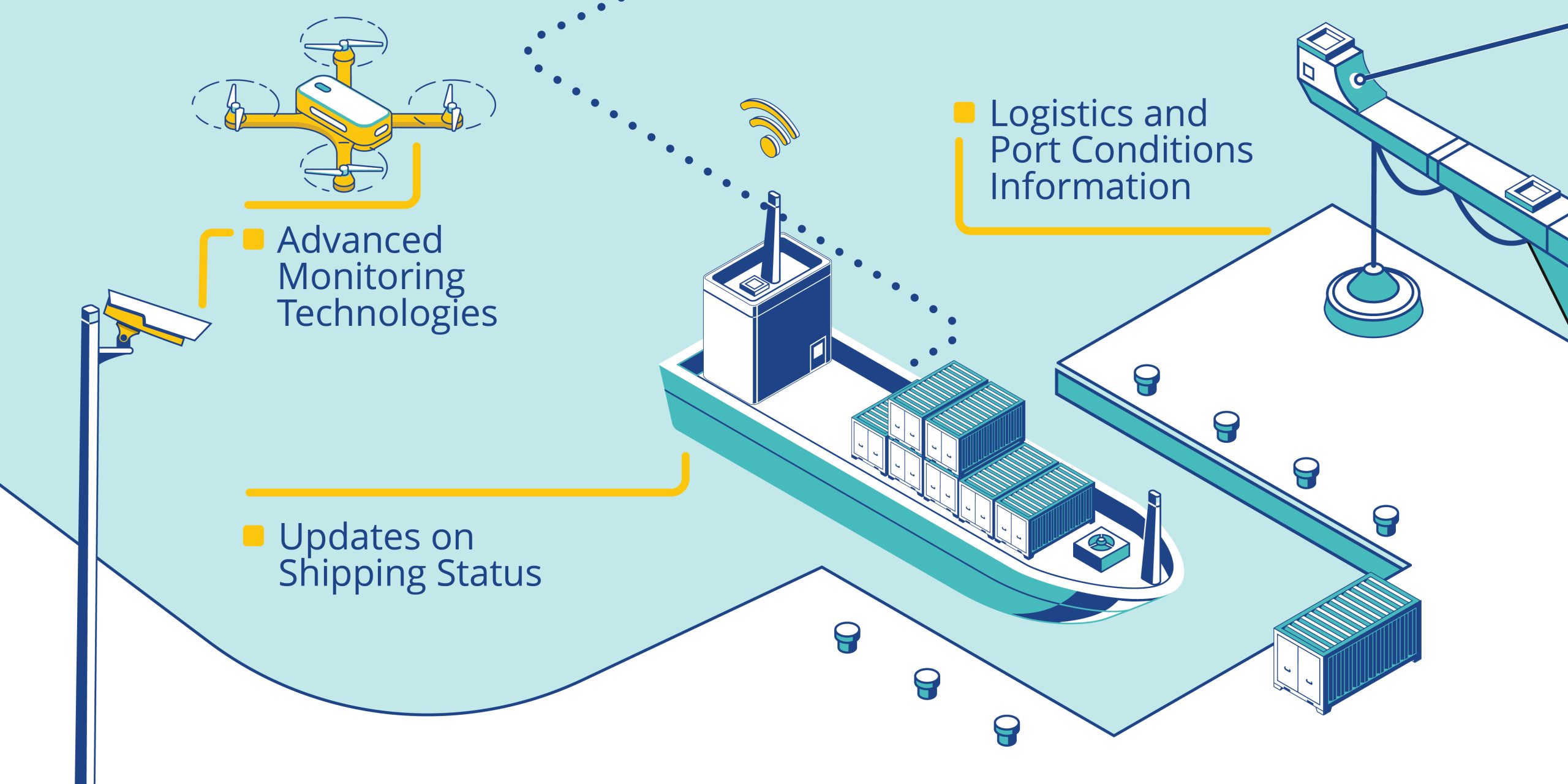
SPAIN | ANY OTHER PORT OR INLAND WATERWAY IN EUROPE
CROSS-BORDER | OUTERMOST | TRAFFIC AND LOGISTICS | EDGE | FOG | CLOUD | COMMUNICATION
The Smart Port Operations Use Case aims to revolutionize port management by leveraging advanced digital technologies. This initiative integrates AI-driven cameras and drone systems to facilitate real-time monitoring of port activities, including the observation of docks, cranes, ships, and volumetric assessments of stockpiles. Central to this use case is the integration of the collected data into the port’s FIWARE digital platform, which is endorsed by the CEF. This integration not only aims to enhance operational efficiency but also focuses on improving safety and sustainability within port operations.
New route completion: When goods successfully arrive at the destination port, the transport service updates the route information, arrival times, and fuel/energy usage on the digital platform.
Annual Carbon Footprint audit: The Port Authority conducts an annual review of the carbon footprint related to transport operations. This process includes the retrieval of carbon footprint metrics and assessments of potential savings.
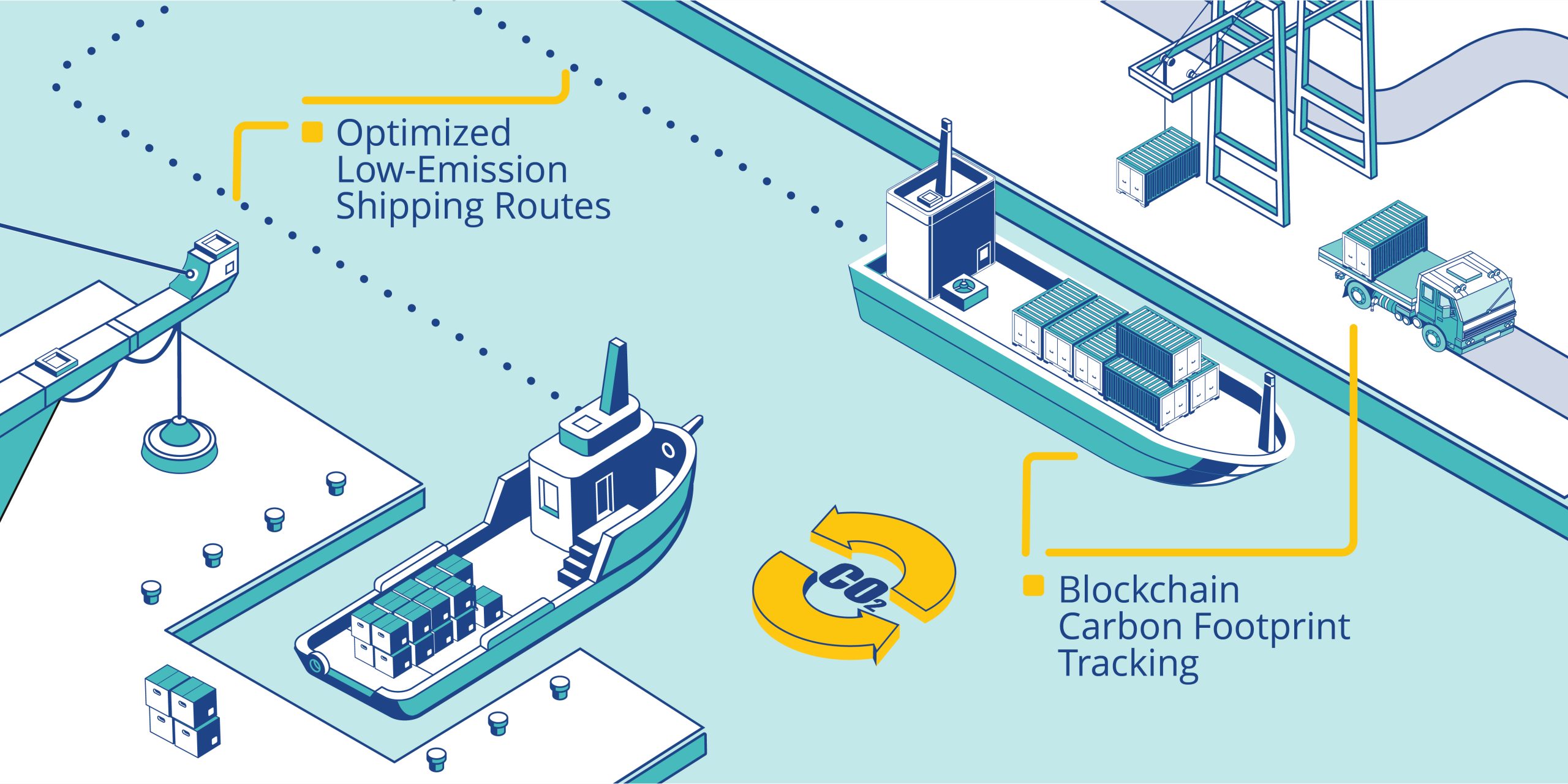
SPAIN | PORTUGAL | ANY OTHER PORT OR INLAND WATERWAY IN EUROPE
CROSS-BORDER | OUTERMOST | TRAFFIC AND LOGISTICS | EDGE | CLOUD | INFORMATION
This UC aims to deliver standardized, reliable, and verifiable data on the carbon footprint of goods transportation, with a primary focus on port logistics. The goal is to create a comprehensive framework that integrates environmental impact data from various actors involved in the supply chain—such as manufacturers, logistics companies, and port operators—into a unified system. This will allow seamless interoperability and data exchange between stakeholders, reducing the complexity and cost of IT adoption, particularly for small and medium-sized enterprises (SMEs). By promoting the use of environmental data in decision-making processes, the system helps compare different transport options based on their carbon footprint.
New Route Completed: Once goods reach a destination port, logistics operators update the ODP with CF data. Consumers and stakeholders can track the emissions linked to their products.
Port CF Auditing: The Port Authority downloads CF indicators, supporting annual audits and compliance with environmental regulations.
Logistics Optimization: Logistics companies use CF data to improve services, offering better transport options with reduced environmental impacts.
New results from our project are on the way!